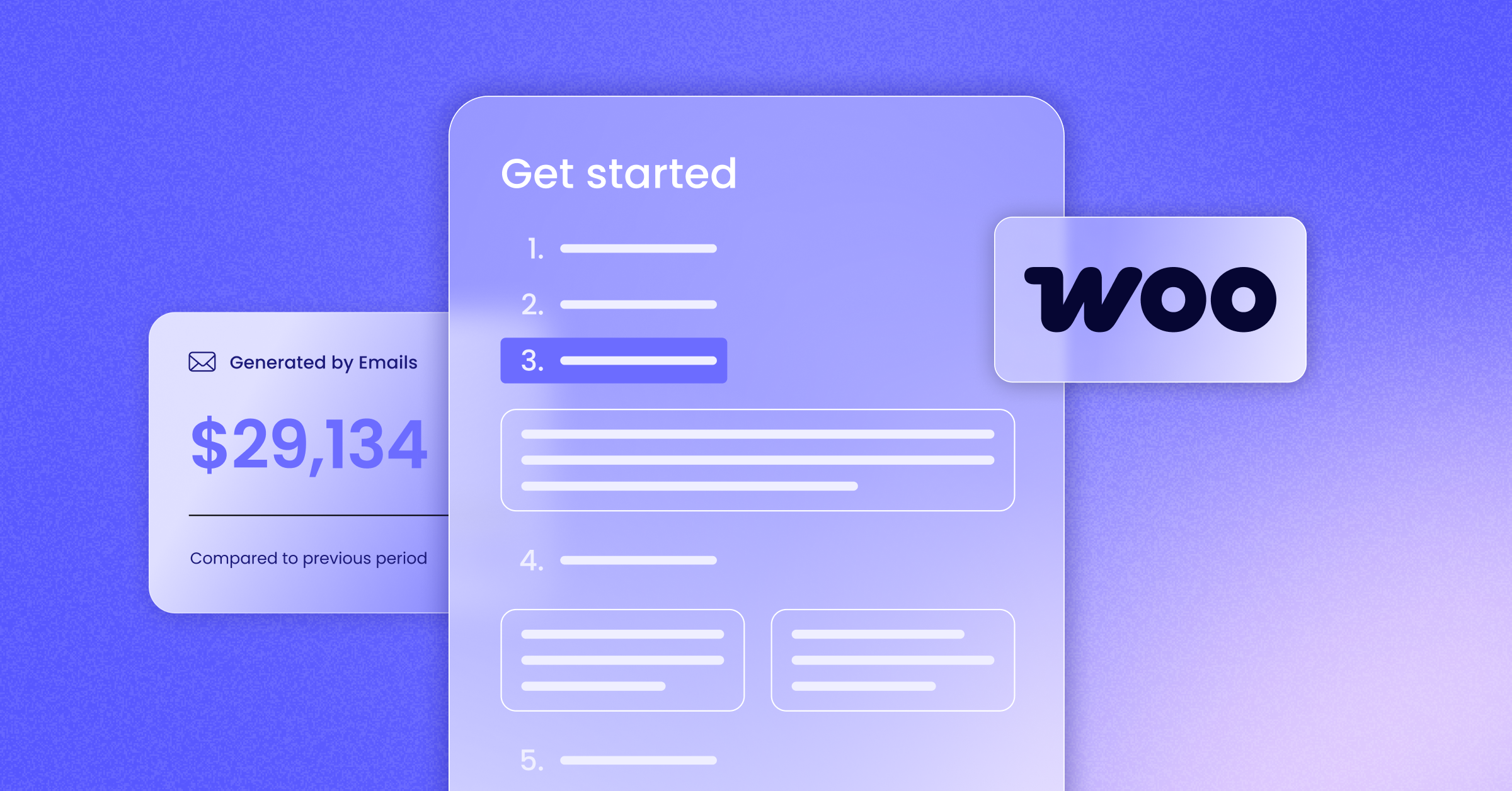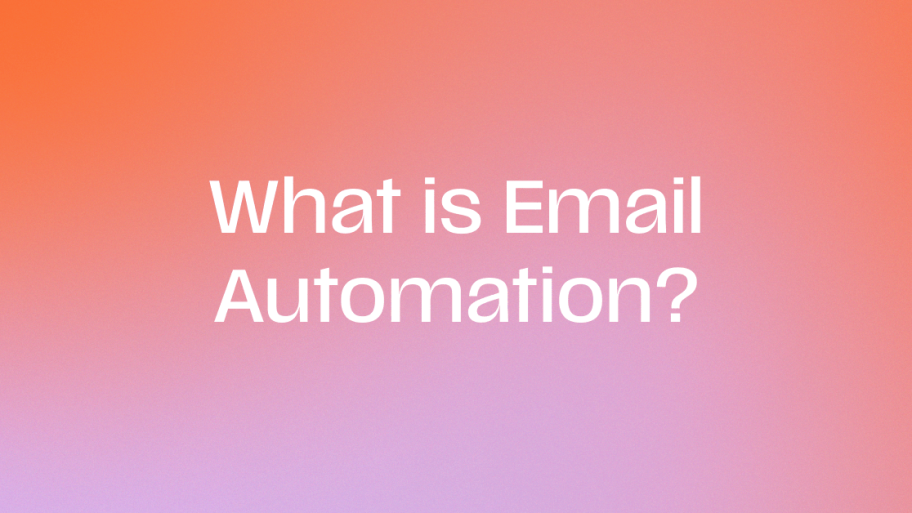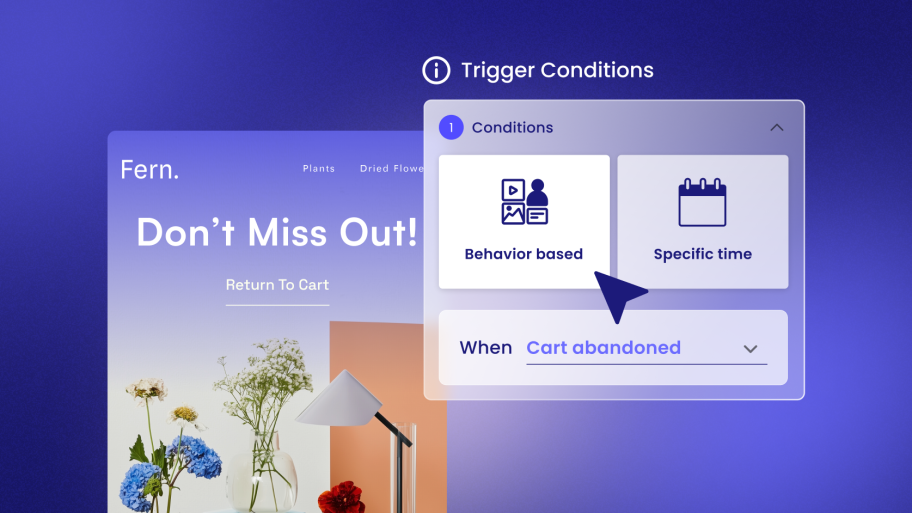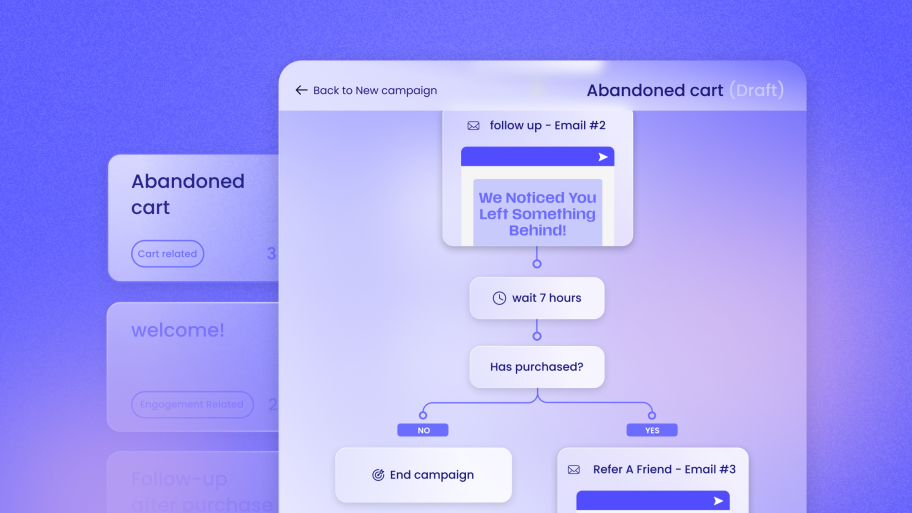This guide will walk you through exactly how to build a robust marketing plan for your online store. We’ll cover the foundational work, the step-by-step writing process, proven tactics for 2025, and a complete template you can use to get started today.
What Is an Ecommerce Marketing Plan?
An e-commerce marketing plan is a strategic document that outlines how you will attract, engage, and retain customers to drive sales for your online business. It’s not just a list of things to do; it’s a comprehensive strategy that connects your business goals to specific marketing actions and metrics.
Think of it as the blueprint for your store’s growth. It details who your customers are, where to find them, what message will resonate with them, and how you’ll measure success.
Why You Can’t Afford to Skip It
Operating without a marketing plan is like trying to navigate a new city without a map. You might stumble upon a point of interest, but you’ll likely waste time, energy, and money on wrong turns.
A well-crafted plan provides:
- Clarity and Focus: It forces you to define what you want to achieve and eliminates “shiny object syndrome”—the tendency to jump on every new marketing trend without considering if it fits your strategy.
- Budget Efficiency: It helps you allocate your marketing dollars to the channels and tactics that will deliver the highest return on investment (ROI), preventing wasteful spending.
- Proactive Growth: Instead of reacting to sales slumps, you can proactively execute campaigns designed to drive consistent growth and build momentum.
- Alignment: It ensures that you, your team, and any freelancers or agencies you hire are all working towards the same objectives with a unified message.
In short, a plan transforms your marketing from a series of random acts into a deliberate, goal-oriented system.
Before You Write: The Foundation of Your Plan
Jumping straight into choosing tactics is a common mistake. The most effective marketing plans are built on a solid foundation of research and self-assessment. Taking the time to complete these initial steps will make the rest of the process smoother and far more effective.
Step 1: Define Your Business Goals & KPIs
Your marketing efforts must serve your broader business objectives. What do you want your business to achieve in the next year? Be specific and make your goals SMART: Specific, Measurable, Achievable, Relevant, and Time-bound.
Examples of E-commerce Business Goals:
- Weak Goal: “I want to increase sales.”
- SMART Goal: “Increase total online revenue by 30% (from $200,000 to $260,000) over the next 12 months.”
Once you have your high-level goals, you need to identify the Key Performance Indicators (KPIs) that will track your progress. KPIs are the specific metrics you’ll monitor to see if your marketing is working.
| Business Goal | Corresponding Marketing KPIs |
| Increase Revenue | Average Order Value (AOV), Conversion Rate, Customer Lifetime Value (CLV) |
| Grow Customer Base | Website Traffic, Email List Growth Rate, Number of New Customers |
| Improve Profitability | Customer Acquisition Cost (CAC), Return on Ad Spend (ROAS) |
| Boost Brand Awareness | Social Media Engagement, Branded Search Volume, Website Traffic |
Choose a handful of primary KPIs for each goal. This focus will keep you from getting overwhelmed by data and allow you to see what’s truly driving results.
Step 2: Pinpoint Your Target Audience & Create Personas
You cannot effectively market to everyone. Trying to do so results in generic messaging that resonates with no one. The key is to identify your ideal customer—the person who will get the most value from your product and become a loyal fan.
To do this, you’ll create customer personas. These are semi-fictional representations of your ideal buyers based on market research and real data about your existing customers.
Your persona should include:
- Demographics: Age, gender, location, income, education level.
- Psychographics: Interests, hobbies, values, lifestyle, personality.
- Pain Points: What problems are they trying to solve? What frustrations do they have that your product can address?
- Shopping Behavior: Where do they shop online? What influences their purchasing decisions (price, reviews, brand values)? What social media platforms do they use?
Example Snippet of a Customer Persona:
- Name: “Sustainable Sarah”
- Age: 28-35
- Location: Urban area (e.g., Austin, TX)
- Income: $60k – $85k
- Pain Points: Finds it hard to source high-quality, ethically-made home goods. Worries about the environmental impact of her purchases. Feels overwhelmed by greenwashing from big brands.
- Shopping Behavior: Reads blogs about sustainable living, trusts influencer recommendations, active on Pinterest and Instagram, willing to pay more for products that align with her values.
With a clear persona like “Sustainable Sarah,” you can tailor your product descriptions, ads, and content to speak directly to her needs and motivations.
Step 3: Analyze Your Competitors (and Learn from Them)
Your competitors are a valuable source of information. By analyzing their strategies, you can identify opportunities, avoid their mistakes, and find ways to differentiate your brand.
Look at 3-5 of your top competitors and analyze their:
- Website & User Experience: Is their site fast? Is it easy to navigate? How is their checkout process?
- Product Offering: What do they sell? How is their pricing structured? What are their key product features?
- Marketing Channels: Where are they active? Are they running Google Ads? Are they strong on Instagram or TikTok? Do they have a blog?
- Messaging & Branding: What is their unique selling proposition? What is the tone of their brand?
- Customer Reviews: What do customers love about them? What do they complain about? (This is a goldmine for finding gaps you can fill).
The goal isn’t to copy your competitors. It’s to understand the landscape you’re operating in so you can carve out your unique space.
Step 4: Conduct a SWOT Analysis
A SWOT analysis helps you synthesize your internal and external research into a clear overview. It stands for Strengths, Weaknesses, Opportunities, and Threats.
- Strengths (Internal): What does your business do well? Do you have a unique product, exceptional customer service, or a strong brand story?
- Weaknesses (Internal): Where could you improve? Is your website slow? Is your product line limited? Do you lack a large marketing budget?
- Opportunities (External): What market trends can you capitalize on? Is there an underserved customer segment? Can you partner with another brand?
- Threats (External): Who are your emerging competitors? Are there changes in technology or regulations that could impact you? Is the cost of your materials rising?
This analysis provides a strategic snapshot that will directly inform which marketing tactics you should prioritize. For example, if a strength is your compelling brand story, content marketing should be a key part of your plan. If a weakness is a low ad budget, you’ll want to focus on organic strategies like SEO and email marketing.
How to Write Your Ecommerce Marketing Plan: A Step-by-Step Guide
With your foundational research complete, you’re ready to start building the plan itself. This section outlines the core components of the written document.
Step 5: Define Your Unique Selling Proposition (USP)
Your Unique Selling Proposition is the core of your marketing message. It’s a clear, concise statement that answers the question: “Why should a customer buy from you and not your competitor?”
A strong USP is:
- Specific: It focuses on a tangible benefit. “Free shipping” is a benefit, but not unique. “Handmade leather goods with a lifetime warranty” is specific and compelling.
- Defensible: You have to be able to deliver on your promise. Don’t claim to be the “highest quality” unless you can prove it.
- Customer-Focused: It highlights a value that matters to your target audience.
How to find your USP:
Review your SWOT analysis and competitor research. Where do your strengths overlap with customer needs and competitor weaknesses? That intersection is often where your USP lies.
Example USPs:
- For a coffee brand: “The freshest coffee on Earth, roasted-to-order and shipped the same day.”
- For a skincare brand: “Clinical-grade skincare for sensitive skin, made with 10 ingredients or less.”
Your USP should be front and center on your website and reflected in all your marketing communications.
Step 6: Choose Your Marketing Channels & Tactics
This is where you decide how you’re going to reach your audience. It’s tempting to try and be everywhere at once, but this stretches your resources too thin. Instead, choose a few channels where your target audience is most active and that align with your goals and budget.
We will cover the most effective channels in detail in the next section, but they generally fall into these categories:
- Owned Media: Channels you control completely (your website, blog, email list).
- Paid Media: Channels where you pay for visibility (Google Ads, social media ads).
- Earned Media: Channels where customers, press, or influencers talk about you (reviews, PR mentions, user-generated content).
For each channel you choose, outline the specific tactics you will use. For example, if you choose “Email Marketing,” your tactics might be “Abandoned cart recovery emails,” “Weekly newsletter,” and a “Welcome series for new subscribers.”
Step 7: Set a Realistic Marketing Budget
Your budget will determine the scale and scope of your activities. There are several ways to approach this:
- Percentage of Revenue: A common method is to allocate 5-15% of your total revenue to marketing. New businesses trying to grow aggressively may be on the higher end of this range.
- Goal-Oriented: Work backward from your goals. If you want to acquire 1,000 new customers and you know your average Customer Acquisition Cost (CAC) is $25, then you need a budget of at least $25,000.
Be sure to break your budget down by channel. How much will go to paid ads vs. content creation vs. software tools? Track your spending and your Return on Ad Spend (ROAS) carefully so you can adjust your allocations based on performance.
Step 8: Create a Content Calendar & Action Plan
An idea without a plan for execution is just a wish. An action plan turns your strategy into a concrete schedule of tasks. The best way to do this is with a content calendar.
A content calendar is a schedule that maps out all your marketing activities over time. It can be a simple spreadsheet or a more advanced project management tool.
Your calendar should include:
- What: The specific piece of content or campaign (e.g., “Mother’s Day Sale Email,” “Blog Post on How to Style a Scarf”).
- When: The date it will be published or launched.
- Where: The channel it will be published on (Email, Instagram, Blog, etc.).
- Who: The person responsible for creating and publishing it.
- Status: The current stage of the task (e.g., To Do, In Progress, Complete).
This calendar creates accountability and ensures a consistent stream of marketing messages. It helps you plan for holidays, product launches, and sales promotions well in advance.
Proven Ecommerce Marketing Strategies & Tactics for 2025
Now let’s dive into the specific channels and tactics you can use to execute your plan. Focus on mastering one or two of these before expanding to others.
Search Engine Optimization (SEO): The Long-Term Growth Engine
SEO is the process of optimizing your website to rank higher in search engine results for relevant keywords. It’s a long-term strategy, but it can deliver a consistent stream of high-intent, “free” traffic over time.
On-Page SEO for Product & Category Pages
This involves optimizing the content on your pages to tell search engines what they are about.
- Keyword Research: Use tools like Google Keyword Planner or Ahrefs to find the terms customers are searching for. Target long-tail keywords (e.g., “men’s waterproof leather hiking boots”) as they are less competitive and have higher conversion rates.
- Title Tags & Meta Descriptions: Your title tag is the most important on-page SEO element. Include your primary keyword and brand name. The meta description doesn’t directly impact rankings, but a compelling one increases click-through rates.
- Product Descriptions: Write unique, detailed, and benefit-driven descriptions. Don’t just copy the manufacturer’s text. Explain how the product solves a problem for your customer.
- High-Quality Images: Use professional photos and optimize them by compressing the file size (for speed) and using descriptive alt text (for accessibility and SEO).
Technical SEO Checklist
Technical SEO ensures that search engines can crawl and index your site effectively.
- Site Speed: A slow site will kill your conversion rates and rankings. Use Google’s PageSpeed Insights to test your site and get recommendations for improvement.
- Mobile-First Design: Your site must be fully responsive and easy to use on a mobile device. Google primarily uses the mobile version of your site for indexing and ranking.
- Simple URL Structure: Use clean, descriptive URLs (e.g., yourstore.com/products/leather-hiking-boots).
- Site Security (HTTPS): An SSL certificate is non-negotiable for e-commerce. It protects your customers’ data and is a confirmed ranking factor.
Content Marketing & Link Building
Content marketing involves creating valuable content (blog posts, guides, videos) that attracts your target audience. For an e-commerce store, this could be a blog post on “10 Ways to Style Your New Dress” or a video tutorial on how to use your product. This not only attracts traffic but also helps you earn backlinks—links from other websites to yours. Backlinks are a powerful signal to Google that your site is trustworthy and authoritative.
Email & SMS Marketing: Your Most Profitable Channel
Email and SMS marketing consistently deliver the highest ROI of any marketing channel because you are communicating with an audience of people who have explicitly opted in to hear from you. It’s your direct line to your most engaged customers and prospects.
Building Your List
You can’t do email marketing without an email list. The most common way to build one is by offering a valuable incentive in exchange for an email address.
- Pop-up Forms: Offer a 10% discount on the first order for new subscribers.
- Gated Content: Offer a free e-book or style guide.
- Giveaways: Run a contest where an email address is required for entry.
Be sure to place signup forms in visible locations, such as your website footer, header, and at the end of blog posts.
Essential Automated Flows
Automation is the key to scaling your email and SMS efforts. These are “set it and forget it” campaigns that trigger based on user behavior.
- Welcome Series: Don’t just send one welcome email. Create a 3-5 email series that introduces your brand story, showcases your best-selling products, and provides social proof (reviews, testimonials).
- Abandoned Cart Recovery: Nearly 70% of online shopping carts are abandoned. An automated email or SMS sent a few hours after a user abandons their cart can recover a significant portion of this lost revenue. Remind them what they left behind, perhaps with a small discount to nudge them over the finish line.
- Post-Purchase Follow-up: The customer journey doesn’t end at checkout. Send a thank you email, shipping notifications, and a request for a review a week or two after the product arrives. This builds trust and encourages repeat business.
A Note on Native Integration
Managing these flows can become complex, especially when you have to sync data between your e-commerce platform and a separate email marketing tool. For businesses built on WordPress and WooCommerce, a native solution like Send by Elementor can streamline this process significantly. It allows you to build these automated email and SMS flows directly within your WordPress dashboard. This tight integration means your customer data, order history, and marketing campaigns all live in one place, eliminating the need for clunky or broken third-party connectors and simplifying your workflow.
Social Media Marketing: Building Community and Driving Sales
Social media is not just for brand awareness; it’s a powerful tool for driving traffic and sales. The key is to choose the right platforms and focus on building a community, not just broadcasting promotions.
Choosing the Right Platforms
Don’t try to be on every platform. Go where your customers are.
- Instagram & Pinterest: Ideal for highly visual products like fashion, home decor, and food. Focus on high-quality imagery, Reels, and influencer collaborations.
- TikTok: Perfect for reaching a younger demographic with short-form, entertaining video content. Behind-the-scenes, product demos, and user-generated content challenges work well here.
- Facebook: With its massive user base and robust advertising platform, Facebook is still a powerhouse for many e-commerce brands, particularly those targeting a broader age range. Facebook Groups can also be great for building a community around your brand.
The Rise of Social Commerce
Social commerce is the practice of selling products directly within social media platforms. Features like Instagram Shopping and TikTok Shop reduce friction in the buying process, allowing users to go from discovery to purchase in just a few taps. Integrating your product catalog with these platforms is a must for 2025.
Paid Advertising (PPC): Getting Immediate Traction
While organic strategies like SEO take time, Pay-Per-Click (PPC) advertising can deliver traffic and sales almost instantly. It’s a powerful way to launch a new product or capitalize on seasonal demand.
Google Ads for Ecommerce
- Search Ads: These ads appear at the top of Google search results. You bid on keywords, and you only pay when someone clicks your ad. They are highly effective because you are reaching users who are actively searching for what you sell.
- Shopping Ads: These are the visually-driven product listings that appear at the top of search results. They are highly effective for e-commerce and a must for most online retailers.
- Performance Max: This is Google’s newest, AI-driven campaign type that runs your ads across all of Google’s properties (Search, Display, YouTube, Gmail, etc.) from a single campaign.
Social Media Ads (Meta, TikTok)
The power of social media ads lies in their sophisticated targeting capabilities. You can target users based on their demographics, interests, online behavior, and even interactions with your website (retargeting). This allows you to get your product in front of your ideal customer persona before they even know to search for it.
Conversion Rate Optimization (CRO): Turning Visitors into Customers
Getting traffic to your site is only half the battle. CRO is the practice of improving your website to increase the percentage of visitors who take a desired action (like making a purchase).
Even small improvements in your conversion rate can have a huge impact on your revenue.
Key areas to focus on for CRO:
- Simplify Your Checkout Process: Remove unnecessary fields and steps. Offer guest checkout and multiple payment options.
- Use High-Quality Product Photos and Videos: Allow customers to see your product from every angle.
- Display Social Proof: Prominently feature customer reviews, ratings, and testimonials.
- Write Clear Calls-to-Action (CTAs): Use strong, action-oriented language on your buttons (e.g., “Add to Cart,” “Buy Now”).
- A/B Testing: Test different versions of your product pages, headlines, or button colors to see what performs best.
Your Ecommerce Marketing Plan Template for 2025
Use this template as a starting point. Copy it into a document and fill in the details for your own business.
[Your Brand Name] Ecommerce Marketing Plan 2025
1. Executive Summary
(A brief, 1-2 paragraph overview of the entire plan. Write this last.)
2. Business Goals & KPIs
- Primary Business Goal 1: (e.g., Increase revenue by 30% in 12 months)
- KPI 1: Average Order Value (AOV)
- KPI 2: Conversion Rate
- KPI 3: Customer Lifetime Value (CLV)
- Primary Business Goal 2: (e.g., Grow customer base by 40%)
- KPI 1: Website Traffic
- KPI 2: Email/SMS List Growth
- KPI 3: New Customer Acquisition Rate
3. Target Audience & Customer Personas
- Persona 1 Name:
- Demographics:
- Psychographics:
- Pain Points:
- Shopping Behavior:
- Persona 2 Name (Optional):
4. Competitive Analysis
- Competitor 1:
- Strengths:
- Weaknesses:
- Marketing Strategy:
- Competitor 2:
- Strengths:
- Weaknesses:
- Marketing Strategy:
5. SWOT Analysis
- Strengths:
- Weaknesses:
- Opportunities:
- Threats:
6. Unique Selling Proposition (USP)
- (Your clear, concise statement on why customers should choose you.)
7. Marketing Channels & Tactics
- Channel 1: SEO
- Tactic: On-page optimization for top 10 product pages.
- Tactic: Publish 2 new blog posts per month.
- Channel 2: Email & SMS Marketing
- Tactic: Implement 3-part welcome series.
- Tactic: Implement 2-step abandoned cart flow.
- Tactic: Send one weekly campaign to the main list.
- Channel 3: Paid Ads (Meta)
- Tactic: Run retargeting campaign for website visitors.
- Tactic: Run prospecting campaign targeting lookalike audiences.
8. Marketing Budget
- Total Monthly Marketing Budget: $______
- Paid Ads: $______
- Software/Tools: $______
- Content Creation/Freelancers: $______
9. Action Plan / Content Calendar
(Link to your separate content calendar spreadsheet or project management tool.)
Putting It All Together: Measuring Success and Adapting Your Plan
Your marketing plan is not a static document. It’s a living guide that should be reviewed and adapted regularly.
- Monthly Review: Check in on your KPIs. Are you on track to meet your goals? Which channels are performing well? Which are underperforming?
- Quarterly Review: Take a deeper dive. Is your messaging still resonating? Do you need to adjust your budget allocations? Are there new opportunities or threats to consider?
Be prepared to pivot. If your TikTok ads are delivering a 10x ROAS while your Google Ads are struggling, don’t be afraid to shift more of your budget to TikTok. The ability to analyze data and adapt your strategy is what separates successful e-commerce businesses from the ones that stagnate.
Conclusion
Building a comprehensive e-commerce marketing plan takes work. It requires research, strategic thinking, and a commitment to execution. But the effort is one of the best investments you can make in your business’s future.
By defining your goals, understanding your customer, and choosing the right tactics, you create a clear path to sustainable growth. You move from guessing to knowing, from reacting to leading. Use this guide and template to build your plan, launch your campaigns, and make 2025 your best year yet.




